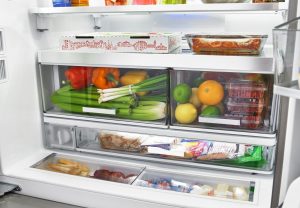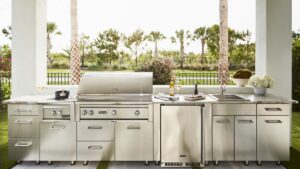Understanding Your Refrigerator Humidity Drawers

The prices of produce have significantly increased in recent years. This makes it crucial that you properly preserve the produce you purchase. Fortunately, this is easy to accomplish with proper use of your refrigerator humidity drawers. Your humidity drawers are more than a handy place to store beers or awkward items that do not fit on the shelves; they are actually specifically designed for produce. So, here we will delve into how your humidity drawers work and how you can best use them.
The Humidity Drawer Basics
Humidity drawers are compartments in the refrigerator that regulate the humidity levels for your produce. Different types of produce have different humidity requirements. This is why many people often refer to these drawers as crisper drawers.
The optimum humidity will keep your produce fresher for longer, saving money and avoiding the unnecessary cost of food waste.
The Different Humidity Requirements for Different Produce
The most important lesson to learn about humidity drawers is knowing the different humidity requirements for different produce.
Generally, fruits require drier conditions for optimum freshness; excessive moisture can encourage spoiling. For this reason, they should be separated from other produce items as these items emit ethylene gas, which causes ripening and breaking down, encouraging spoiling. Vegetables such as onions can also spoil in higher humidity, so prefer lower humidity conditions.
Conversely, leafy vegetables thrive in high humidity. This keeps the leaves crisp and delicious rather than limp and sad.
If you tend to have a mixture of different fruits and vegetables in your home, it is a good idea to find a refrigerator with independently controlled separate humidity drawers. This will allow you to tailor the humidity level to the produce in each drawer. If this is not possible, you may need to remove certain fruits from your refrigerator, which may be causing items to ripen and spoil.
Adjusting Your Humidity Drawers
Most crisper drawers have an adjustable humidity vent. This allows you to close off airflow, creating a higher humidity level, or open it to reduce humidity. This will allow you to control the airflow around the fruits and vegetables in the drawer.
The vents ensure that you can trap or release the ethylene gas that can cause your produce to quickly ripen. When you shut off the vent, you will not only create a high humidity drawer, but also trap the ethylene gas, so it won’t escape and prematurely soften your other produce.
So, if you have a refrigerator model with two drawers, you can create one low and one high humidity drawer. But, if you find some great salad bargains and buy enough to last the family a whole week, you can convert both drawers to high humidity.
Pro Tips to Preserve Your Produce
The team at Michigan State University has created a list of tips to help you make the most of your humidity drawers and preserve your produce.
- Sort your produce: We’ve already discussed how different types of produce require different humidity conditions. So, before putting your items in the refrigerator, sort them into low humidity and high humidity. This will help you to experience less spoilage and save money on your produce.
- Reduce humidity for thinner skinned fruits and vegetables: Typically, produce with thinner skins benefit from less humidity, so try reducing the humidity in your drawer to prolong the lifespan of your items.
- Take lemons out of the crisper drawer: Lemons and other citrus fruit tend to prefer as little humidity as possible. So, while you can keep them in your refrigerator, keep them out of the crisper drawer.
- Avoid the humidity drawer for potatoes, onions, and garlic: All varieties of potatoes, including sweet potatoes, garlic, and onions, all prefer cool, dry conditions. So, avoid putting these items in your crisper drawers, in fact, they may benefit from being left out of your refrigerator altogether.
If your refrigerator lacks crisper drawers and you’re considering an upgrade, you can explore your options with this online collection. Alternatively, our team of appliance specialists is available to offer additional help and guidance.
- Designing the Ultimate Outdoor Bar: Must-Have Appliances for Year-Round Fun
- Luxury Refrigerator Guide 2025: Built-In vs. Freestanding and What to Know Before You Buy
- How Smart Appliances Are Changing Luxury Kitchen Design in 2025
- The Ultimate Outdoor Grill Guide for 2025: Built-In vs. Freestanding
- Smart Bathroom Faucets & Fixtures in 2025: Blending Technology with Luxury Design
- Built-In Coffee Machines: Are They Worth It for Your Kitchen in 2025?
- How to Choose the Right Dishwasher for Your Home: Noise, Capacity, and Features Explained
- Top 5 Kitchen Appliance Colors and Finishes for 2025 (And How to Match Your Style)
- Why a Countertop Ice Maker is a Must-Have for Summer Kitchen Upgrades in Southern California
- How to Remove Scratches from Stainless Steel Luxury Appliances






